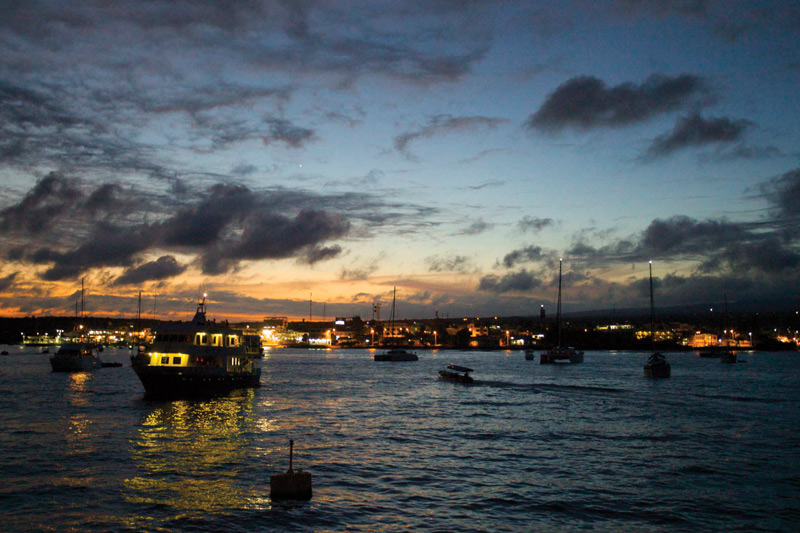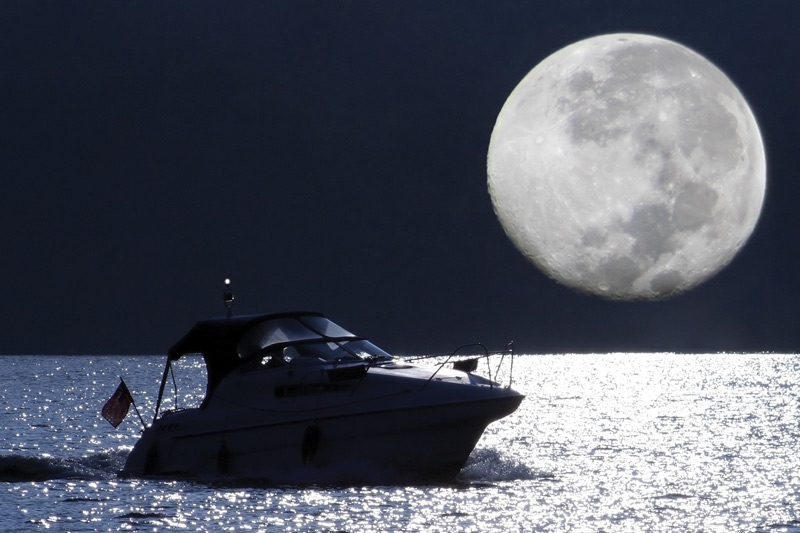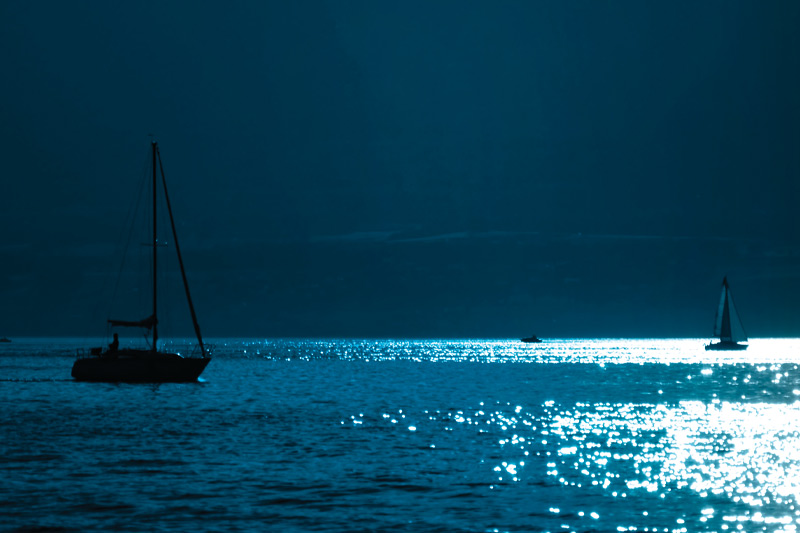
Pro Tips for Night Running
The sun lowers to the horizon, and the sky darkens with patches of white cumulus clouds. The sea is relatively calm with a light chop; wind from the northwest at ten knots and a five-foot swell from the west at 12 seconds. The forecast is for these conditions to remain for at least the next 24 hours.
I am 12 nautical miles west southwest of Cape Alava, just south of Cape Flattery, on my first leg of a 1,250-nautical-mile delivery from Seattle to Newport Beach, California. I left Shilshole Bay Marina this morning at 0600 hours, just as dawn broke. I ran the 105 nautical miles to Neah Bay at 10 knots, arriving at 1630 hours. My goal was to be offshore where the water was deep enough to be outside any crab pots.
One of my standing rules and advice to all boaters is to never run at night in inland waters. Barring the legal definition, for me that means anything inside of Cape Flattery. Period. The possibility of logs, debris, pots, and other hazards is just too great.
As I round the buoy northwest of Tatoosh Island, I turn to a southwest course to start moving slowly offshore. 22 nautical miles and a little over two hours later, I reach my waypoint off Cape Alava. My depth is 800 feet and I know that my new course of due south will keep me in water over four hundred feet deep for the rest of the night. I am starting to prepare for my first overnight passage of this trip. Out of the 10,000 plus miles I average each year as a delivery captain, a full one third are done in complete darkness.
In my travels, I often meet other boaters who are transiting the coast. We will get bunched up in port invariably waiting for the same incessant wind to stop blowing and allow us to pass. This gives me time to get to know some of them, often helping them with their trip planning and offering weather advice. In my conversations, I find that many of them are not only intimidated by the weather, but by the prospect of doing longer legs and having to run overnight. Most will just avoid doing overnights by doing day legs only.
Established on my new course with a light sea behind me and a good forecast ahead, the sun sets and dusk starts to take hold. Up to this point, I have met the conditions for two of my basic rules of the Overnight Passage:
- #1: Always pick good weather.
- #2: always run well offshore to stay outside of the crab pots.
As it starts to get darker outside, I work on my third rule; making the pilothouse dark. I darken the pilothouse in order to spare my night vision so I can more easily see lights of other boats, buoys, etc. in the pitch dark. I start to identify all of the lights and screens that will need to be dimmed or covered. Almost every piece of equipment on your console has some sort of light associated with it. All of them need to be dimmed or covered. What are the items that I never travel without, you ask? A roll of blue 3M masking tape and an assortment of towels and microfiber cloths. Most of this you probably already have on your boat.
 I dim the chartplotter and radar screens as it gets darker. Engine controls, various indicator lights, stabilizer control, radios, and more all get covered with either tape or towels. Most chartplotter and radar screens will not dim far enough and will still be too bright once is gets completely dark. Those will eventually get covered with a towel. The goal is to have the pilothouse area as dark as you can get it so that it won’t distract you from seeing lights outside. Some modern integrated systems can be set on an automatic dimming schedule as well.
I dim the chartplotter and radar screens as it gets darker. Engine controls, various indicator lights, stabilizer control, radios, and more all get covered with either tape or towels. Most chartplotter and radar screens will not dim far enough and will still be too bright once is gets completely dark. Those will eventually get covered with a towel. The goal is to have the pilothouse area as dark as you can get it so that it won’t distract you from seeing lights outside. Some modern integrated systems can be set on an automatic dimming schedule as well.
The first question I get asked is, “How do you see the chartplotter and the radar?” The answer is you don’t. Your autopilot is set and you only need to check your cross-track error every 10 or 15 minutes. The same is true with the radar. I usually set it on the six-mile scale. At six miles you have plenty of time to see targets and your radar, if properly adjusted, has much better resolution than at higher scales. Checking it every 10 to 15 minutes is adequate. It’s worth noting that MARPA/ARPA capabilities can help alert you to incoming targets automatically.
An hour and a half past sunset and it is completely dark outside. There is enough cloud cover so that I see very few stars. The horizon is gone and I don’t even see the water. Having absolutely no outside visual reference can be very disconcerting for many. When I have someone with me who has never experienced that before, there is usually a short “freak out” period until they get used to the idea that you are floating in absolute blackness. This is where the concept of faith is tested. Faith that you will not run over anything. Faith that everything will be ok. Faith that the sun will come up the next morning. What helps give me peace of mind is that I have picked good weather, that my course takes me through waters free of crab pots and hopefully most debris, and that my vessel is properly maintained and running well.
Aside from my fundamental three rules of the overnight passage (good weather, safe course, and darkened pilothouse) there are a couple of other basic things that can help. Having a set routine is the first. The designated watch standers should be established on their watch schedule during the day and that should be continued through the night. Everyone should be getting as much sleep on their off time as possible. Keep meals as simple as possible. Sandwiches, cereal, and microwave meals. Everything should be in its place, like the flashlights, tools, and utensils. Look for anything that can be a tripping hazard in the dark. It is a good idea to have those not on watch camp out in the salon. It is usually the best riding space on the boat where they can get the best sleep.
There is a big difference between daylight and darkness when it comes to motion sickness. My advice to anyone who isn’t sure about how they will do is to take medication anyway. There is nothing worse than being sea sick. Better to be safe than sorry.
 I am now three hours into my overnight passage. My eyes have grown accustomed to the darkness, my body to the lack of reference and gentle motion of the boat. My crewman and I have settled into our overnight watch schedule. I will usually do a two hours on and two hours off rotation. You can do whatever is comfortable for those onboard and the number of people you have. We are checking the chartplotter and radar every 10 to 15 minutes, adjusting the autopilot as necessary. The sky has cleared a bit and we start to see more stars come out. I look to the east and notice a cream-colored glow on the horizon. A three quarters waning moon starts to rise.
I am now three hours into my overnight passage. My eyes have grown accustomed to the darkness, my body to the lack of reference and gentle motion of the boat. My crewman and I have settled into our overnight watch schedule. I will usually do a two hours on and two hours off rotation. You can do whatever is comfortable for those onboard and the number of people you have. We are checking the chartplotter and radar every 10 to 15 minutes, adjusting the autopilot as necessary. The sky has cleared a bit and we start to see more stars come out. I look to the east and notice a cream-colored glow on the horizon. A three quarters waning moon starts to rise.
An hour later, everything is different. Instead of complete and utter blackness, there is light. Moonlight shimmers off the water, tracing the edge of the horizon. What started out as a scene from a Stephen King movie is now a softly lit magical view that very few people will ever get to experience.
The overnight passage is a truly unique boating experience in so many different ways. Over the years and miles it is one that I have come to look forward to and appreciate. With the right planning, preparation, decision making, and execution, it can be one that you too cherish.